Choosing the right dog breed for your family is a thrilling yet challenging experience. With so many breeds out there, each boasting unique traits and temperaments, how do you narrow down your choice? Whether you live in an apartment or a house with a yard, whether your children are toddlers or teens, or whether you’re a first-time dog owner or experienced pet parent, understanding the most popular dog breeds can guide you toward the perfect furry companion. In this comprehensive guide, I’ll walk you through the top 5 most popular dog breeds beloved by families, including what makes them fantastic pets, their care needs, and training tips. Along the way, you’ll discover how lifestyle factors influence breed popularity and get expert insights into each dog’s temperament, health, and suitability for family life. If you’ve been searching for clarity on the most popular dog breeds to find your next family member, you’re in exactly the right place.
Understanding Dog Breed Popularity: Trends and Insights
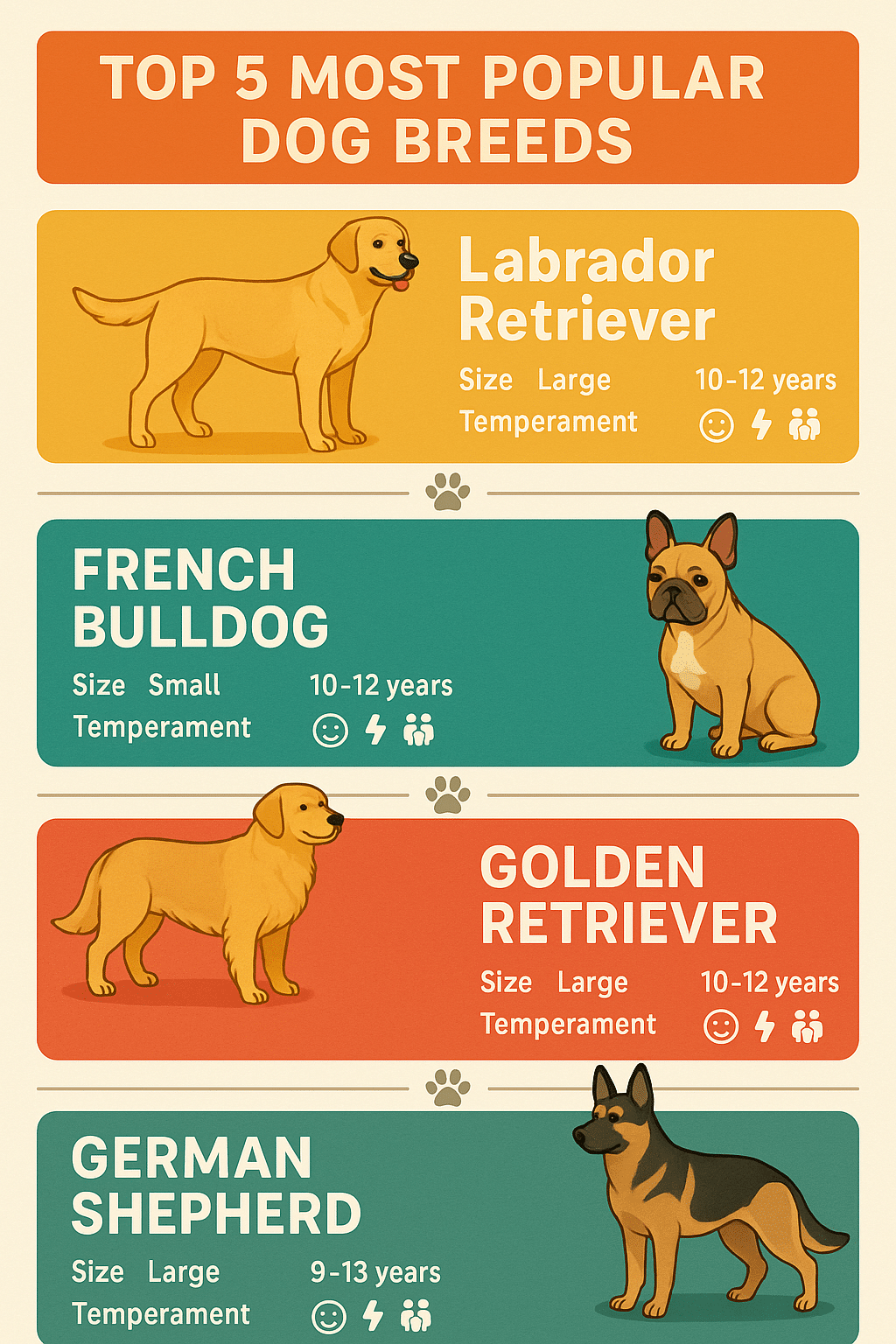
Popularity in dog breeds isn’t just about cuteness or trendiness; it reflects a complex mix of factors such as temperament, size, adaptability, and even cultural shifts. To understand why certain breeds top the charts year after year, it helps to look at underlying trends and reliable data sources.
Role of the American Kennel Club in Dog Breed Rankings
One of the leading authorities on breed popularity is the American Kennel Club (AKC), which compiles annual registration statistics to determine which breeds are in highest demand. The AKC’s rankings are based on the number of new puppy registrations and provide valuable insight into shifting preferences among dog owners. This organization has been tracking breed popularity for decades, enabling families like yours to see which dogs consistently meet expectations for companionship, trainability, and overall fit within different lifestyles.
The AKC rankings also highlight the impact of breed characteristics on popularity. For example, dogs with gentle temperaments and low grooming needs tend to climb the ranks faster in urban areas. Those with loyal and protective natures often find favor among families prioritizing security and outdoor activities.
How Registration Statistics Reflect Popularity and Suitability
Beyond just numbers, registration statistics give us clues about the suitability of breeds for different family types. French Bulldogs, once rare and exotic, have surged in popularity partly because their smaller size and friendly nature suit apartment living and busy city lifestyles. Meanwhile, breeds like the Labrador and Golden Retriever have maintained their standing as beloved family dogs due to their loyal, outgoing temperaments and adaptability to active environments.
It’s worth noting that popularity can also reflect evolving family needs. Nowadays, there’s a growing demand for hypoallergenic breeds, paving the way for poodles and similar dogs to gain traction. Moreover, the rise in dog training awareness and accessibility has helped increase interest in breeds traditionally seen as more challenging.
Top 5 Most Popular Dog Breeds for Families
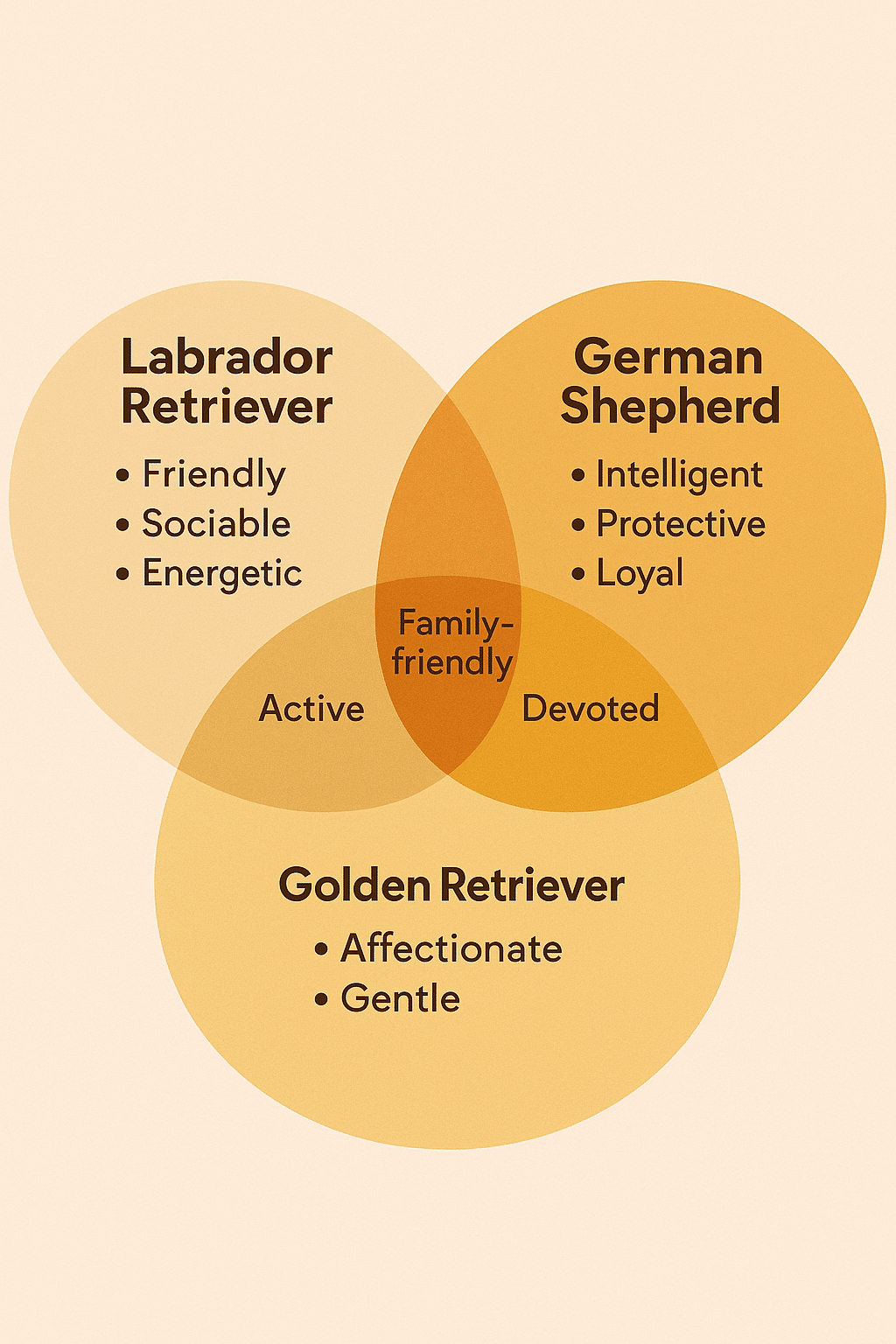
After analyzing breed rankings and family preferences, here are the five most popular dog breeds that consistently earn the hearts of families across the country.
1. French Bulldog: The Reigning Champion for Urban Living
Characteristics and Temperament
The French Bulldog has stolen the crown in breed rankings recently, and it’s easy to understand why. This charming little dog features a compact, muscular build with a distinctive bat-like ear shape. Frenchies are famously affectionate, playful, and adaptable. Their calm demeanor makes them excellent companions in close living quarters, yet they still enjoy bursts of playtime and interaction.
French Bulldogs are known for being patient and good-natured, qualities that endear them to families with children. They aren’t overly energetic but thrive on attention, making them lovable couch buddies with a cheeky streak.
Ideal Family and Apartment Living Compatibility
If you live in an apartment or urban environment, the French Bulldog is a top pick. Their small size (typically 16-28 pounds) and low-exercise needs mean they don’t require large yards or long daily walks to be content. Frenchies fit effortlessly into busy households, especially those with kids who want a dog to cuddle and play gently with.
Their minimal barking and moderate shedding also appeal to apartment dwellers mindful of neighbors and indoor air quality.
Training Considerations and Health Overview
Training a French Bulldog involves patience and consistency. They respond well to positive reinforcement but can have stubborn tendencies requiring gentle persistence. Basic commands and socialization are essential to prevent behavioral issues.
Health-wise, French Bulldogs have some inherited challenges, particularly breathing difficulties due to their brachycephalic (flat-faced) structure. Owners must be mindful during hot weather and avoid overexertion. Regular vet checkups and maintaining a healthy weight are critical for their wellbeing.
2. Labrador Retriever: All-Time Favorite for Active Families
Breed History and Personality Traits
The Labrador Retriever has long been a staple for families drawn to active, outdoor lifestyles. Originally bred as fishing and hunting companions, Labs possess incredible intelligence, loyalty, and a friendly disposition that makes them excellent family pets.
Labradors are famously gentle with children and tend to get along well with other pets, making them perfect for households that value inclusivity and playfulness. Their high energy levels and eagerness to please create strong bonds between dog and family members.
Suitability for Children and Outdoor Lifestyles
If your family enjoys hiking, jogging, or playing sports, a Labrador fits right in. These dogs love to swim, retrieve, and run, so they flourish in environments where they receive plenty of exercise and mental stimulation.
Additionally, Labs have a patient temperament that suits families with kids of all ages, including toddlers, giving parents peace of mind about safety and interactions.
Easiest Training Methods and Health Considerations
Labrador Retrievers rank among the easiest dog breeds to train, thanks to their intelligence and desire to make their owners happy. Early socialization combined with consistent obedience training helps prevent common issues like jumping or chewing.
Health-wise, Labs are predisposed to some common issues such as hip dysplasia and obesity, particularly if not exercised consistently. A balanced diet and regular vet visits help prevent these problems and extend their average lifespan of 10 to 12 years.
3. Golden Retriever: Gentle Temperament and Family Friendliness
Temperament and Behavioral Traits
Golden Retrievers are perhaps the quintessential family dog. Known for their warm, friendly nature and striking golden coats, they excel at being affectionate and trustworthy companions. Their sociable demeanor means they enjoy meeting new people and thrive on family interaction.
Goldens are calm but playful, making them ideal for families seeking a patient dog that can match energy levels ranging from chill cuddle sessions to active outdoor play.
Role as Therapy and Assistance Dogs
Your family might appreciate that Golden Retrievers are often trained as therapy and service animals, highlighting their intelligence and gentle nature. Their keen ability to interpret human emotion adds a layer of connection that benefits families needing both a protector and a healer on four legs.
Recommended Training Approaches
Goldens respond best to positive reinforcement training and benefit greatly from early obedience classes. Activities that challenge their minds, like puzzle toys and scent games, keep them mentally sharp.
They thrive on structured routines and consistency but also adapt well to changes, making them flexible companions in dynamic family life.
4. German Shepherd: Protective and Intelligent Family Companion
Breed Characteristics and Temperament
German Shepherds embody a powerful blend of intelligence, loyalty, and protectiveness, qualities that many families find reassuring. They are large, athletic dogs with a noble appearance and a reputation for courage and devotion.
Their strong protective instincts make them ideal for families prioritizing security, while their intelligence means they can learn complex commands quickly.
Training for Obedience and Family Integration
Training a German Shepherd is both a responsibility and a rewarding challenge. They need firm, consistent guidance and thrive when given tasks or jobs that utilize their natural working dog talents.
For families with children, early socialization is key to ensuring the dog remains gentle and well-mannered. German Shepherds excel in obedience training and activities like agility and search-and-rescue, which can be fun for both dog and family.
Health and Longevity
While German Shepherds are generally healthy, they are susceptible to hip and elbow dysplasia. Responsible breeding and regular exercise help maintain their physical health, while mental stimulation prevents boredom-related behaviors.
Average lifespan ranges from 9 to 13 years, with proactive veterinary care extending quality of life.
5. Poodle: Hypoallergenic Option for Sensitive Families
Hypoallergenic Traits and Size Variations
For families with allergy concerns, the Poodle often tops the list of most popular dog breeds. Their unique curly coat sheds very little dander, significantly lowering the risk of triggering allergies.
Poodles also come in three size categories: standard, miniature, and toy, offering versatile options regardless of living arrangement—from spacious homes to cozy apartments.
Intelligence and Ease of Training
Poodles are among the smartest dog breeds, often topping canine intelligence rankings. This makes them quick learners and highly trainable, able to excel in obedience, tricks, and even canine sports like dock diving.
Their keen nature makes them responsive to consistent training, though they require regular mental engagement to stay happy and well-behaved.
Family Compatibility and Activity Needs
Poodles mesh well with families who want an active, attentive dog but need to avoid allergy issues. They’re playful yet sociable and typically get along well with children and other pets.
Because Poodles thrive on interaction and exercise, families should be prepared to dedicate time daily for walks, play sessions, and mental tasks.
Popular Dog Breeds By Living Situation and Family Needs
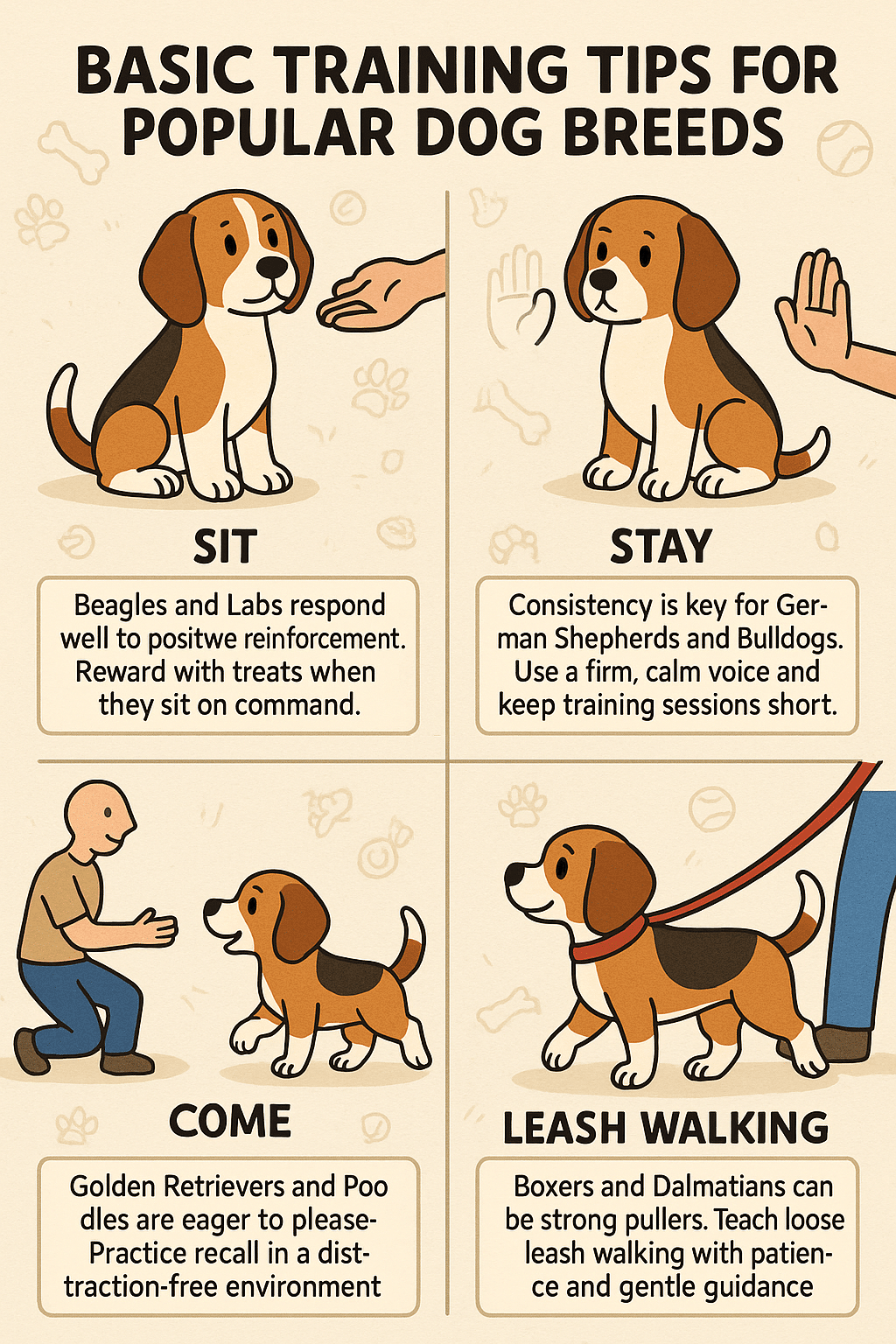
Choosing the right dog isn’t just about popularity—it’s about fitting their unique needs to your living environment and family dynamics.
Best Dog Breeds for Apartment and Urban Living
Small to medium dogs with calm temperaments like the French Bulldog, Poodle (miniature or toy), and Boston Terrier are perfect for apartments. Their manageable exercise needs and low noise levels prevent common neighborhood grievances.
Most Popular Small Dog Breeds for Families
Besides French Bulldogs and Poodles, breeds like Cavalier King Charles Spaniels and Dachshunds are beloved for combining compact size with affectionate temperaments and moderate activity needs.
Popular Large Dog Breeds for Active Families
Labrador Retrievers, Golden Retrievers, and German Shepherds lead the pack for families seeking energetic, robust dogs suited for outdoor activities like hiking, running, and fetching games.
Training Tips for Popular Dog Breeds with Children
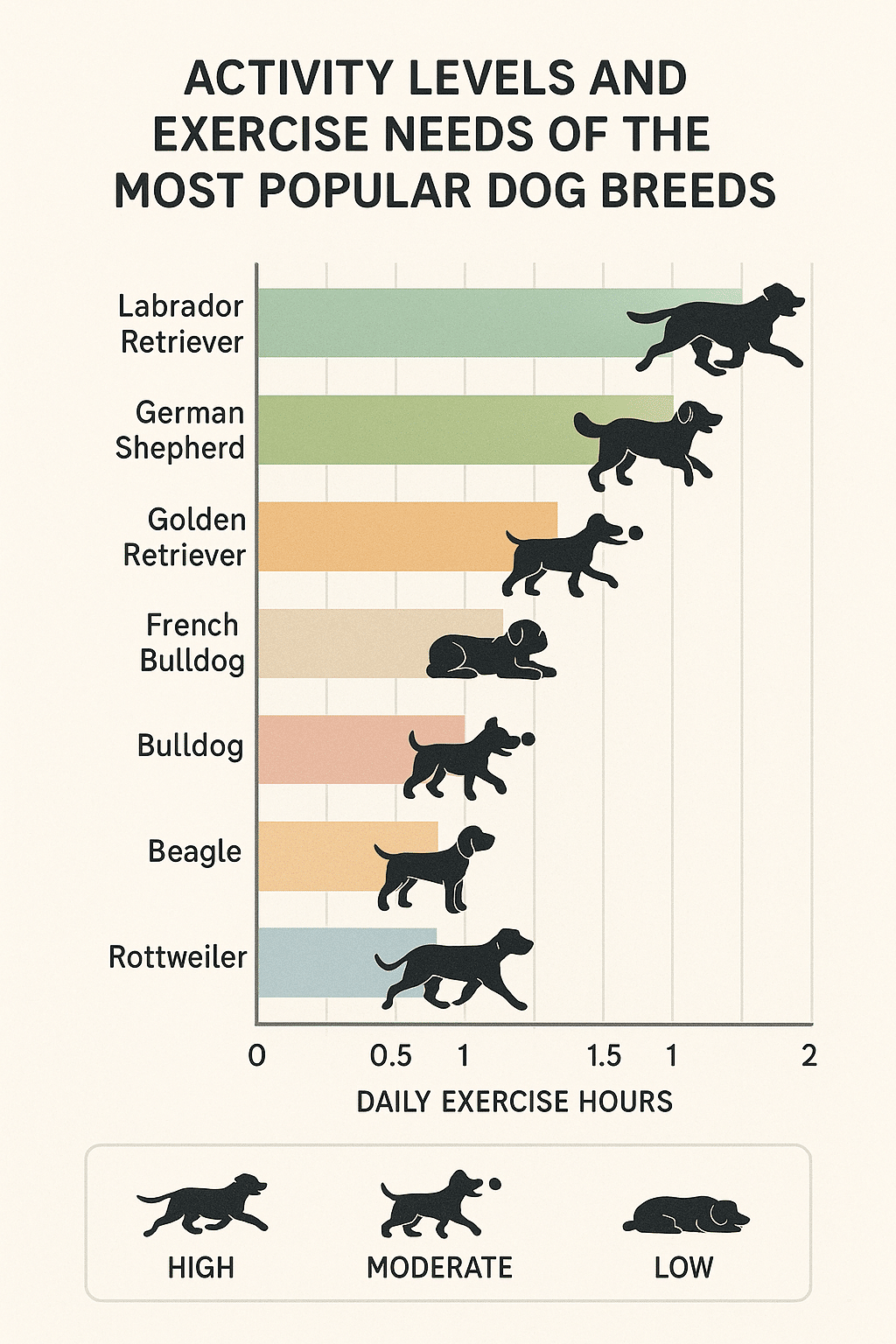
Training family-friendly dogs requires understanding breed tendencies and using effective methods.
Puppy Training Basics for Beginners
Start socialization early by exposing puppies to a variety of people, environments, and stimuli. Use positive reinforcement techniques, including treats and praise, to encourage good behavior.
Teaching Obedience: Focus on Top Family-Friendly Breeds
Focus on commands like sit, stay, come, and leave it. For breeds like Labs and Goldens, incorporating games that shape obedience into play enhances engagement.
Addressing Behavioral Challenges by Breed
For instance, French Bulldogs may be stubborn and need patience; German Shepherds might need mental challenges to avoid boredom, while Poodles require regular grooming routines paired with training.
Health and Longevity: Choosing Breeds with Good Genetic Background
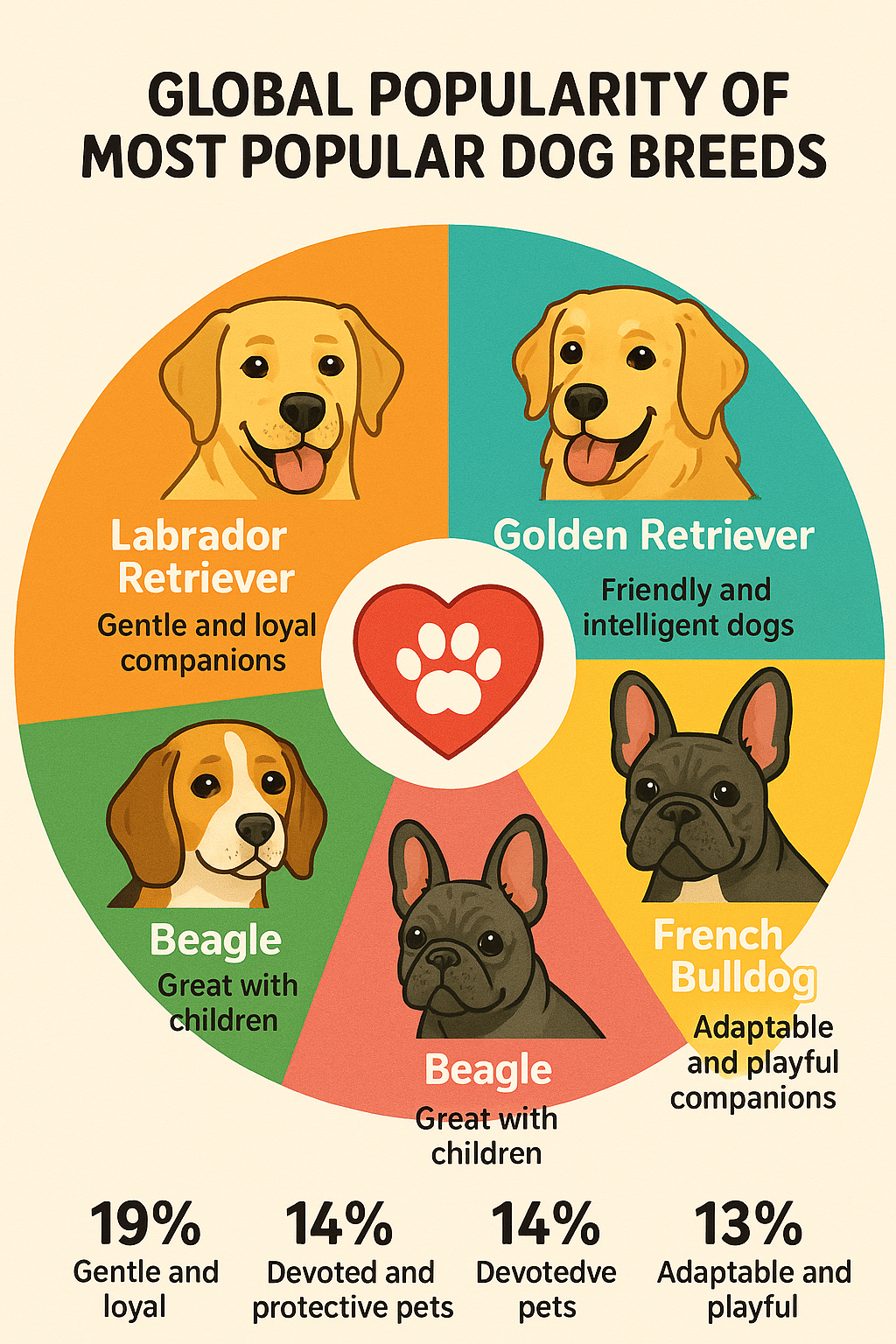
Understanding health risks linked to popular breeds helps families prepare for better pet care.
Common Health Issues in Popular Breeds
- French Bulldogs: breathing issues, hip dysplasia
- Labradors: obesity, joint problems
- Golden Retrievers: cancer risk, hip dysplasia
- German Shepherds: joint disorders, digestive issues
- Poodles: ear infections, thyroid problems
Tips for Maintaining Long-Term Canine Health
Ensure regular vet checkups, balanced diets tailored to breed needs, regular exercise without overexertion, and preventive care like dental hygiene and parasite control.
Unique Insights: How Family Lifestyle Influences Dog Breed Popularity
Shifts in Popularity Based on Urbanization and Activity Levels
As more families move to cities, compact breeds like French Bulldogs rise in popularity, reflecting convenience and space considerations. Conversely, active suburban families continue championing larger breeds like Labs.
The Growing Demand for Hypoallergenic and Adaptable Breeds
Rising allergy awareness and preference for low-maintenance coats have boosted breeds such as Poodles and their mixes (e.g., Labradoodles), indicating an important trend among modern families.
Conclusion: Selecting the Perfect Breed to Fit Your Family’s Unique Needs and Lifestyle
Knowing about the most popular dog breeds and their unique traits is only the first step in welcoming a new four-legged family member. Your choice should reflect your living environment, activity level, allergy considerations, and the amount of time you can dedicate to training and care. Whether you pick the charming French Bulldog perfect for apartments, the energetic Labrador Retriever eager to join weekend hikes, or the intelligent, hypoallergenic Poodle that fits allergy-sensitive homes, the best dog breed is the one that will thrive alongside your family.
By combining insights from breed popularity trends, expert training tips, and a clear awareness of your lifestyle, you’ll find a companion that brings years of joy, love, and unforgettable memories. Ready to begin your journey in adding the perfect dog breed to your family? Trust these picks and advice to steer you in the right direction toward a happy and healthy canine companionship!
FAQs
1. What are the most popular dog breeds for families with children?
Families with children usually favor Labrador Retrievers, Golden Retrievers, and French Bulldogs due to their friendly, patient temperaments and ease of training, making them ideal companions for kids of all ages.
2. Which dog breeds are best for apartment living?
French Bulldogs, Toy and Miniature Poodles, and Cavalier King Charles Spaniels are among the best breeds for apartment living thanks to their small size, moderate exercise needs, and minimal barking.
3. What are the easiest dog breeds to train for beginners?
Labrador Retrievers, Golden Retrievers, and Poodles top the list for ease of training due to their intelligence, eagerness to please, and positive response to consistent reinforcement methods.
4. Are there popular hypoallergenic dog breeds suitable for families?
Yes, Poodles and mixes like Labradoodles are popular hypoallergenic breeds that produce less dander, making them better options for families with allergy sensitivities.
5. How can I ensure my popular family dog breed stays healthy?
Regular veterinary checkups, proper nutrition, exercise tailored to breed needs, grooming, and early socialization and training are vital to maintaining long-term health and happiness in your dog.
Quick Takeaways
- The American Kennel Club’s registration data guides breed popularity insights.
- French Bulldogs have surged in urban popularity due to size and temperament.
- Labrador and Golden Retrievers remain top choices for active families.
- German Shepherds are prized for loyalty and protection but require firm training.
- Poodles offer hypoallergenic traits and intelligence, great for allergy-sensitive households.
- Matching breed traits to living situations ensures a good fit for family lifestyle.
- Consistent training and health care maximize your dog’s quality of life and family harmony.



